Pico-BLE
| ||
Introduction
Note
The module can only be connected to the mobile phone currently.
V1.1 (purchased after 2022/02/20), supports connection with Raspberry PI.
Introduction
The Pico-BLE is a dual-mode Bluetooth 5.1 expansion module designed for Raspberry Pi Pico, which is controlled via UART AT commands, with SPP and BLE support. Combined with the Raspberry Pi Pico, it can be used for Bluetooth wireless communication applications.
Features
- Standard Raspberry Pi Pico header, supports Raspberry Pi Pico series.
- Controlled via UART AT commands, get started quickly.
- Comes with online development resources and manual (Raspberry Pi Pico C/C++ and MicroPython examples).
Specifications
- Input voltage: 3.3V/5V
- Communication: UART
- Communication rate: up to 1,000,000 bps
- Dimensions: 56.5 × 21mm
Pinout
Dimensions
Examples
For the Pico-BLE module, we provide an serial example. Hereby we take C codes to explain the function.
Hardware Interface
BLE.c
The Bluetooth module initialization function mainly judges whether the Bluetooth module is successfully connected to the mobile phone, whether the notify function is enabled, querying the baud rate of the Bluetooth module, judges whether it is in low power mode, name, address, and modifying the name of the module.
void BLE_Init()
Execute and process BLE commands.
uint8_t Cmd_Process(uint8_t *data)
data: the address of the command pointer to send
Transparent transmission receiving function, what data the mobile phone sends to the module, the module receives and returns the same data with this function.
void UART_RX() Query receive void UART_RX_IRQ() Interrupt receive
Parameter Modification
BLE.h
#define UART_ID uart0 Pico serial port selection #define BAUD_RATE 115200 Serial port baud rate selection #define DATA_BITS 8 Serial port data bits #define STOP_BITS 1 Serial port data stop bits #define PARITY UART_PARITY_NONE Whether the serial port performs parity check #define UART_TX_PIN 0 Pico serial port TX pin selection #define UART_RX_PIN 1 Pico serial port RX pin selection #define BLE_MODE_PIN 15 Bluetooth module status detection pin
Module Command
CMD.h
For specific use, please refer to the user manual.
Demonstration
Mobile Phone APP Demo
Connect the Pico/Pico2 and Pico-BLE:
Open the Python demo and run:
Open the software on the smartphone. (This is just a demo, you can download any Bluetooth APP from the app store.)
Click to pair:
Click on Pairing and the following will appear on the computer and the phone:
Enter the data on your cell phone and click send (your computer will show you the screen where you sent it):
PS: Apps using the BLE protocol on the mobile side need to open the notify interface.
Computer AT Command Demonstration
Use the USB to the serial port module to connect the computer and Pico-BLE, open the SSCOM software, select the corresponding baud rate (the default is 115200), enter the command, and enable "carriage return and line feed" (must be, otherwise the command will be invalid).

The above command is a reset command, please refer to the user manual for more commands.
V1.1 (Purchased after 2022/02/20)
Includes all the features of the previous version, with the following new features.
Raspberry Pi Connection
Input "bluetoothctl" to enter the Bluetooth interactive mode.
Input "Show" to check the Bluetooth status.
"Powered: yes" means the Bluetooth can be opened.
"Discoverable: no" means it cannot be searched by other devices.
"Pairable: yes" runs to pair.

powered yes opens the Bluetooth, powered no closes the Bluetooth pairable yes allows it to pair, pairable no means no pairing
Input "scan on" to query the Bluetooth.

Input "pair [MAC]" to pair the Bluetooth.
When pairing SPP, input the contents according to the requirements if the pairing code is set.
When pairing BLE, you can directly observe whether it is paired successfully.


Input "exit" to exit the Bluetooth interactive mode.
Automatically connect to the Bluetooth corresponding to the address.
sudo rfcomm conn /dev/rfcomm0 [MAC]
When it is successfully created the label characters are shown.

The port is already in use when the following content is shown.

After successfully creating, the Raspberry Pi will automatically generate a serial port number, rfcomm0.
Send the data
echo 1234541 > /dev/rfcomm0
Read the data.
cat /dev/rfcomm0
Resource
Document
Demo
Serial Port Assistant
Development Software
- Zimo221.7z
- Image2Lcd.7z
- Font Library Tutorial
- Image Extraction Tutorial
- Thonny Python IDE (Windows V3.3.3)
Pico Getting Started
Firmware Download
Introduction
MicroPython Series
Install Thonny IDE
In order to facilitate the development of Pico/Pico2 boards using MicroPython on a computer, it is recommended to download the Thonny IDE
- Download Thonny IDE and follow the steps to install, the installation packages are all Windows versions, please refer to Thonny's official website for other versions
- After installation, the language and motherboard environment need to be configured for the first use. Since we are using Pico/Pico2, pay attention to selecting the Raspberry Pi option for the motherboard environment
- Configure MicroPython environment and choose Pico/Pico2 port
- Connect Pico/Pico2 to your computer first, and in the lower right corner of Thonny left-click on the configuration environment option --> select Configture interpreter
- In the pop-up window, select MicroPython (Raspberry Pi Pico), and choose the corresponding port
Flash Firmware
- Click OK to return to the Thonny main interface, download the corresponding firmware library and burn it to the device, and then click the Stop button to display the current environment in the Shell window
- Note: Flashing the Pico2 firmware provided by Micropython may cause the device to be unrecognized, please use the firmware below or in the package
- How to download the firmware library for Pico/Pico2 in windows: After holding down the BOOT button and connecting to the computer, release the BOOT button, a removable disk will appear on the computer, copy the firmware library into it
- How to download the firmware library for RP2040/RP2350 in windows: After connecting to the computer, press the BOOT key and the RESET key at the same time, release the RESET key first and then release the BOOT key, a removable disk will appear on the computer, copy the firmware library into it (you can also use the Pico/Pico2 method)
MicroPython Series
【MicroPython】 machine.Pin class function details
【MicroPython】machine.PWM class function details
【MicroPython】machine.ADC class function details
【MicroPython】machine.UART class function details
【MicroPython】machine.I2C class function details
【MicroPython】machine.SPI class function details
【MicroPython】rp2.StateMachine class function details
C/C++ Series
For C/C++, it is recommended to use Pico VS Code for development. This is a Microsoft Visual Studio Code extension designed to make it easier for you to create, develop, and debug projects for the Raspberry Pi Pico series development boards. No matter if you are a beginner or an experienced professional, this tool can assist you in developing Pico with confidence and ease. Here's how to install and use the extension.
- Official website tutorial: https://www.raspberrypi.com/news/pico-vscode-extension/
- This tutorial is suitable for Raspberry Pi Pico, Pico2 and the RP2040 and RP2350 series development boards developed by Waveshare
- The development environment defaults to Windows11. For other environments, please refer to the official tutorial for installation
Install VSCode
-
First, click to download pico-vscode package, unzip and open the package, double-click to install VSCode
Note: If vscode is installed, check if the version is v1.87.0 or later
Install Extension
-
Click Extensions and select Install from VSIX
-
Select the package with the vsix suffix and click Install
-
Then vscode will automatically install raspberry-pi-pico and its dependency extensions, you can click Refresh to check the installation progress
-
The text in the right lower corner shows that the installation is complete. Close VSCode
Configure Extension
-
Open directory C:\Users\username and copy the entire .pico-sdk to that directory
-
The Copy is completed
-
Open vscode and configure the paths for the Raspberry Pi Pico extensions
The configuration is as follows:Cmake Path: ${HOME}/.pico-sdk/cmake/v3.28.6/bin/cmake.exe Git Path: ${HOME}/.pico-sdk/git/cmd/git.exe Ninja Path: ${HOME}/.pico-sdk/ninja/v1.12.1/ninja.exe Python3 Path: ${HOME}/.pico-sdk/python/3.12.1/python.exe
New Project
-
The configuration is complete, create a new project, enter the project name, select the path, and click Create to create the project
To test the official example, you can click on the Example next to the project name to select
-
The project is created successfully
-
Select the SDK version
-
Select Yes for advanced configuration
-
Choose the cross-compilation chain, 13.2.Rel1 is applicable for ARM cores, RISCV.13.3 is applicable for RISCV cores. You can select either based on your requirements
-
Select default for CMake version (the path configured earlier)
-
Select default for Ninjaversion
-
Select the development board
-
Click Complie to compile
-
The uf2 format file is successfully compiled
Import Project
- The Cmake file of the imported project cannot have Chinese (including comments), otherwise the import may fail
-
To import your own project, you need to add a line of code to the Cmake file to switch between pico and pico2 normally, otherwise even if pico2 is selected, the compiled firmware will still be suitable for pico
set(PICO_BOARD pico CACHE STRING "Board type")
Update Extension
-
The extension version in the offline package is 0.15.2, and you can also choose to update to the latest version after the installation is complete
Arduino IDE Series
Install Arduino IDE
-
First, go to Arduino official website to download the installation package of the Arduino IDE.

-
Here, you can select Just Download.

-
Once the download is complete, click Install.

Notice: During the installation process, it will prompt you to install the driver, just click Install
600px
Arduino IDE Interface
-
After the first installation, when you open the Arduino IDE, it will be in English. You can switch to other languages in File --> Preferences, or continue using the English interface.

-
In the Language field, select the language you want to switch to, and click OK.

Install Arduino-Pico Core in the Arduino IDE
-
Open the Arduino IDE, click on the file in the top left corner, and select Preferences
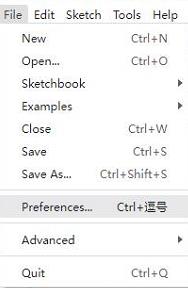
-
Add the following link to the attached board manager URL, and then click OK
https://github.com/earlephilhower/arduino-pico/releases/download/4.0.2/package_rp2040_index.json
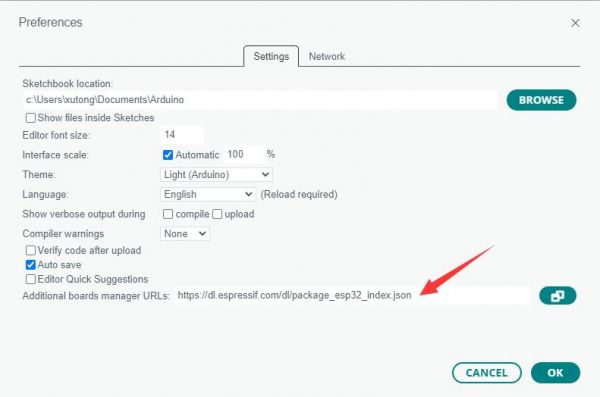
Note: If you already have an ESP32 board URL, you can use a comma to separate the URLs as follows:https://dl.espressif.com/dl/package_esp32_index.json,https://github.com/earlephilhower/arduino-pico/releases/download/4.0.2/package_rp2040_index.json
-
Click Tools > Development Board > Board Manager > Search pico, as my computer has already been installed, it shows that it is installed
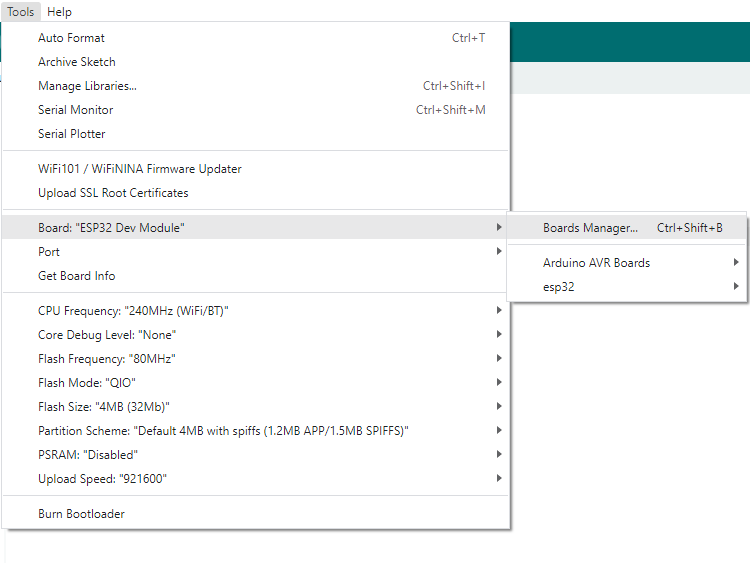
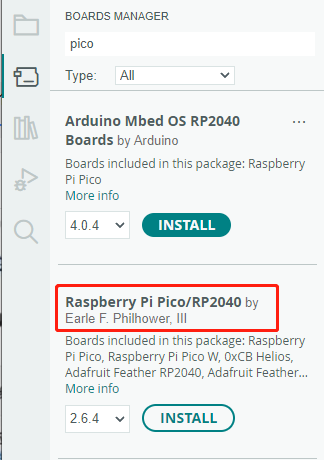
Upload Demo at the First Time
-
Press and hold the BOOTSET button on the Pico board, connect the pico to the USB port of the computer via the Micro USB cable, and release the button after the computer recognizes a removable hard disk (RPI-RP2).
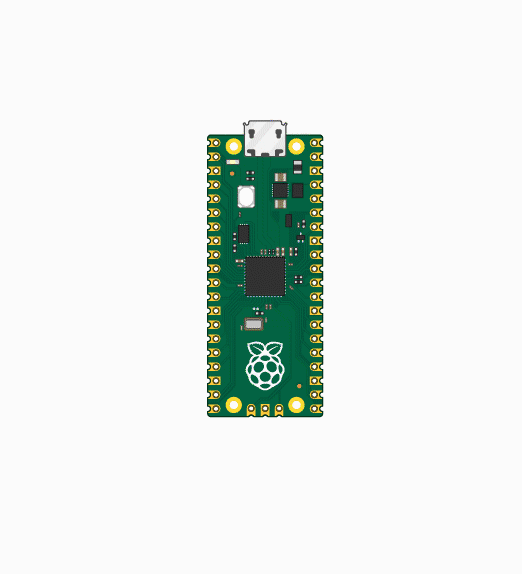
- Download the program and open D1-LED.ino under the arduino\PWM\D1-LED path
-
Click Tools --> Port, remember the existing COM, do not click this COM (the COM displayed is different on different computers, remember the COM on your own computer)
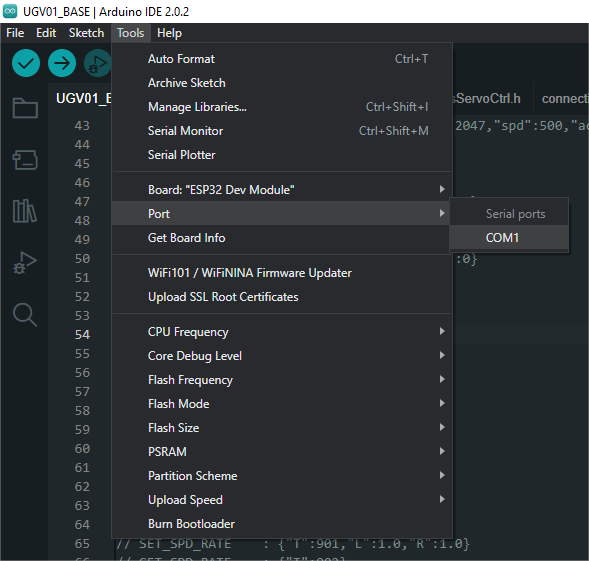
-
Connect the driver board to the computer using a USB cable. Then, go to Tools > Port. For the first connection, select uf2 Board. After uploading, when you connect again, an additional COM port will appear
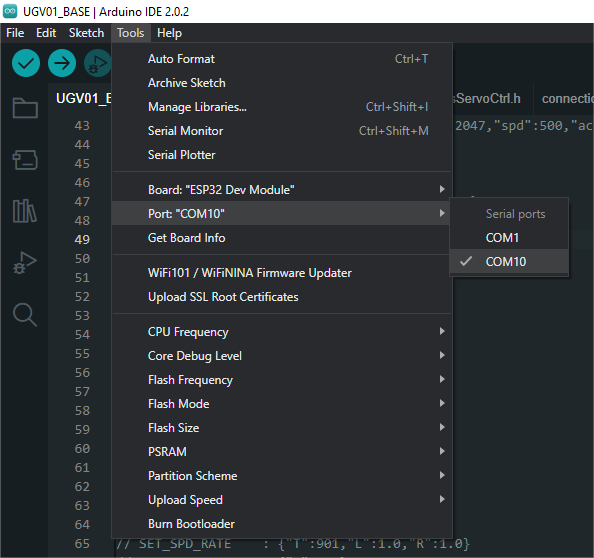
-
Click Tools > Development Board > Raspberry Pi Pico > Raspberry Pi Pico or Raspberry Pi Pico 2
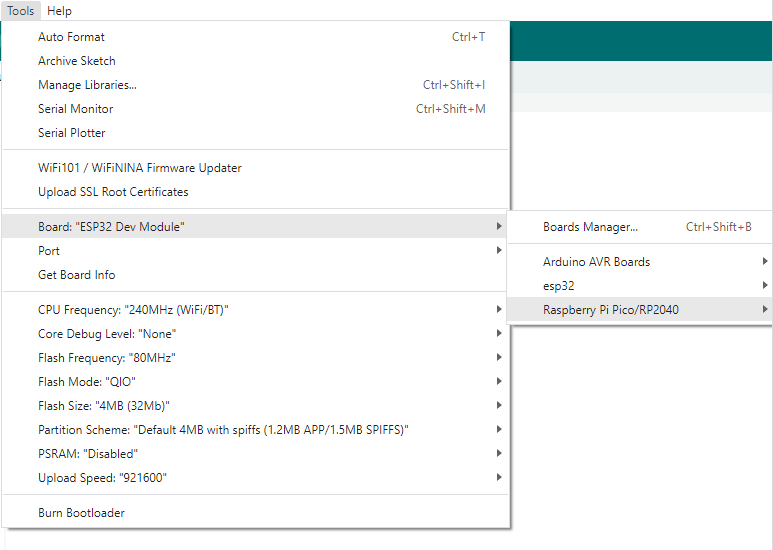
- After setting it up, click the right arrow to upload the program

- If issues arise during this period, and if you need to reinstall or update the Arduino IDE version, it is necessary to uninstall the Arduino IDE completely. After uninstalling the software, you need to manually delete all contents within the C:\Users\[name]\AppData\Local\Arduino15 folder (you need to show hidden files to see this folder). Then, proceed with a fresh installation.
Open Source Demos
MircoPython video demo (github)
MicroPython firmware/Blink demos (C)
Raspberry Pi official C/C++ demo (github)
Raspberry Pi official micropython demo (github)
Arduino official C/C++ demo (github)
FAQ
|
|
Support
Technical Support
If you need technical support or have any feedback/review, please click the Submit Now button to submit a ticket, Our support team will check and reply to you within 1 to 2 working days. Please be patient as we make every effort to help you to resolve the issue.
Working Time: 9 AM - 6 PM GMT+8 (Monday to Friday)















